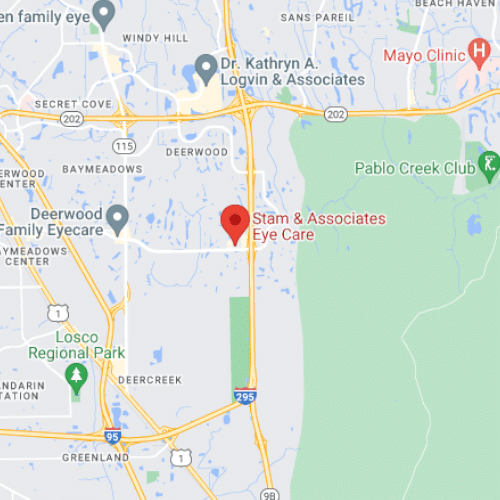Glaucoma

Glaucoma is caused by damage to or excessive pressure on the optic nerve and nerve fibers that constitute sections of the retina. In its early stages, this disease usually has no symptoms. Left untreated, glaucoma usually leads to vision loss. According to the National Eye Institute, the most prevalent form of glaucoma affects roughly 2.2 million Americans aged 40 and over (open-angle glaucoma). Incredibly, nearly half of those who have glaucoma are completely unaware that they have it.
What is Glaucoma?
Ultimately, injury to the optic nerve causes glaucoma. Blind patches form in your vision field when this nerve deteriorates. This nerve injury is linked to increased ocular pressure.
An accumulation of a fluid (aqueous humor) that circulates across the interior of your eye causes increased ocular pressure. At the angle where the iris and cornea meet, this internal fluid drains via a tissue called the trabecular meshwork. When fluid is overproduced or the drainage mechanism fails, the fluid cannot flow out at its typical pace, causing increased ocular pressure and subsequent vision loss.
Risk Factors For Glaucoma
Certain people in the population are at higher risk for glaucoma. These include:
- Those over 40 years of age
- Those who have a genetic history of glaucoma in the family
- Very near-sighted people
- Those who have diabetes
- Those who have used steroids for an extended period of time
- African Americans aged 35 and older
Note that even if you do not fall into any of these categories, routine testing for glaucoma is imperative. Glaucoma often shows no symptoms to the individual. Only a professional glaucoma screening can tell if you have glaucoma in many cases.
Types of Glaucoma
There are three forms of glaucoma: open-angle, narrow-angle, and low-tension. The most prevalent kind of glaucoma is open-angle glaucoma, which arises when the eye’s drainage system fails. The aqueous fluid can enter the drainage system, however it does not flow adequately. Narrow-angle glaucoma is a kind of glaucoma that develops when the drainage system is clogged, causing fast ocular pressure increase since the fluid has nowhere to go. There have also been cases of low-tension glaucoma, in which the optic nerve is injured despite the absence of excessive eye pressure.
Glaucoma Screenings
The screening test for glaucoma in Jacksonville, Florida is fast, painless and non-invasive. It only takes less than a minute and is included in the regular eye exam. It consists of a very short puff of air to measure ocular pressure. If this tests indicates anything unusual, your eye doctor will consult with you about further testing and treatment options.
Glaucoma cannot be reversed. However, with early detection, vision can usually be saved. There are treatments available to halt the progression of this insidious disease. But, because symptoms are so infrequently present, glaucoma testing is highly recommended so that the disease does not advance to the point where there is vision loss.

